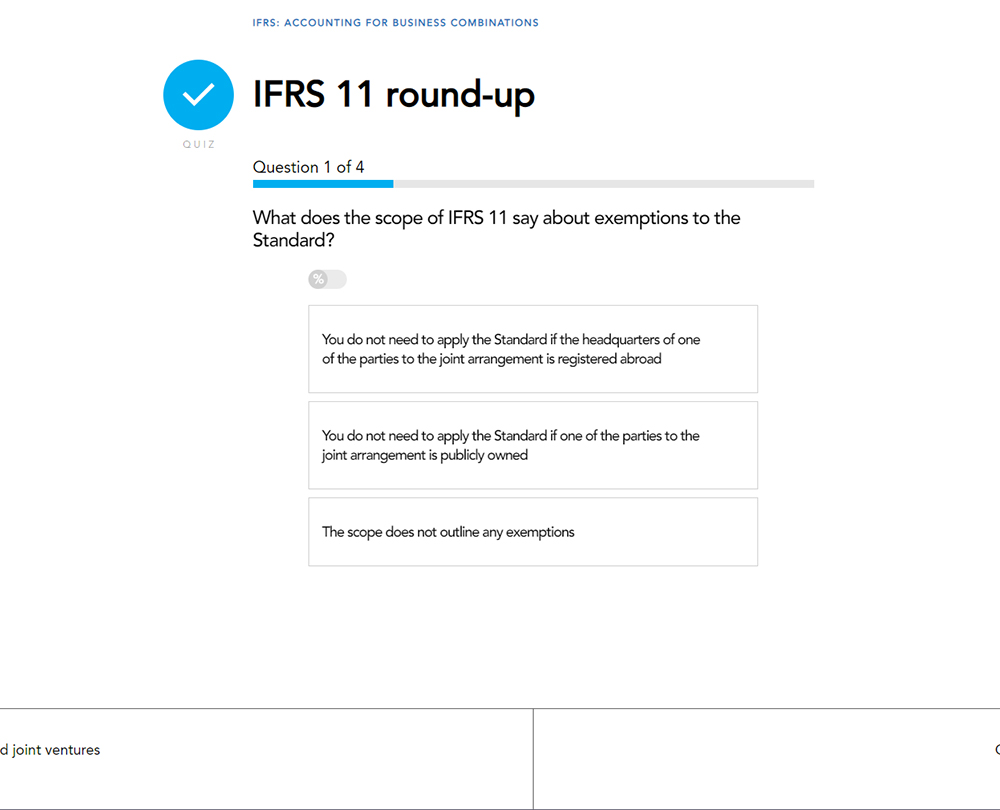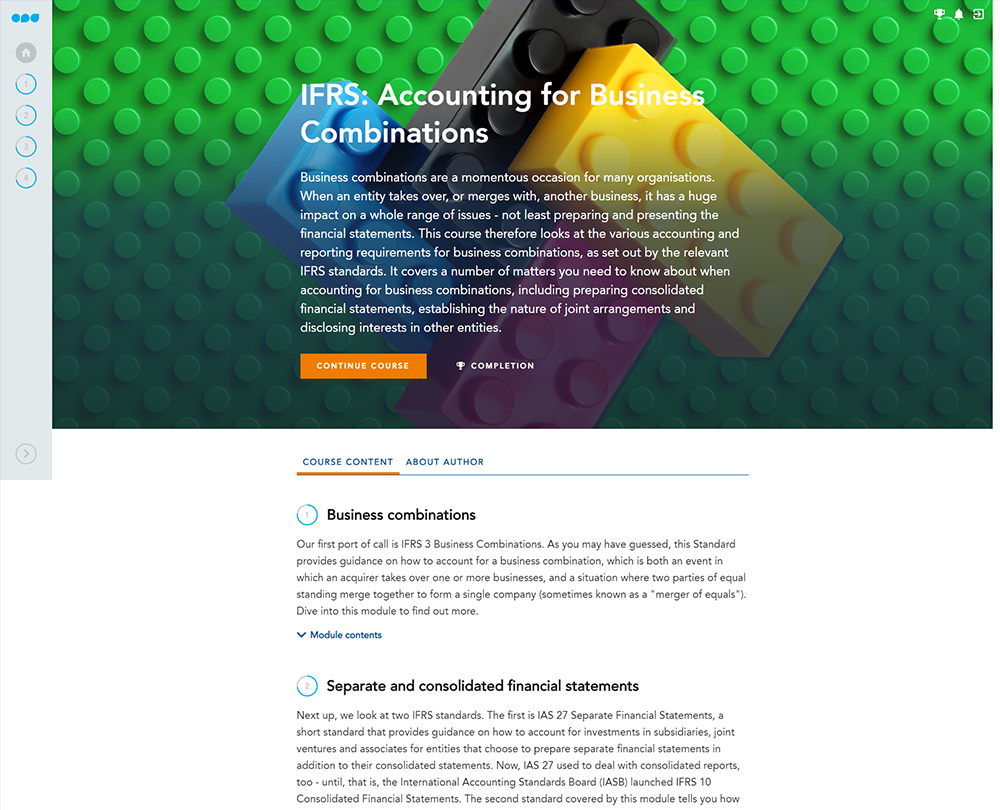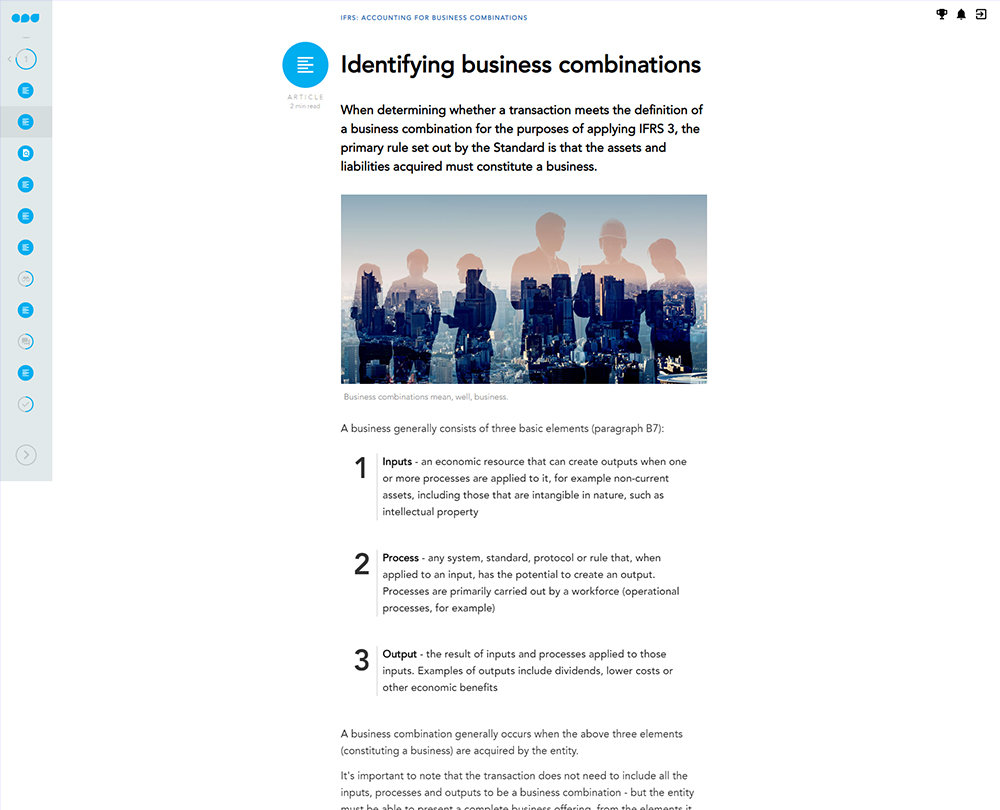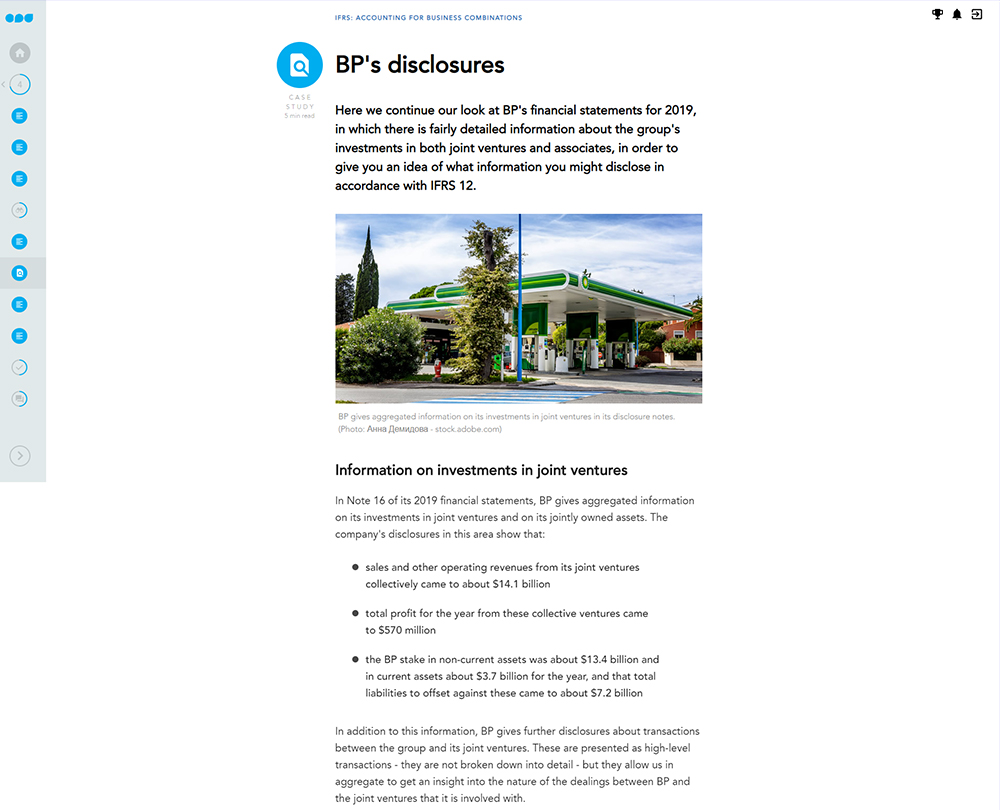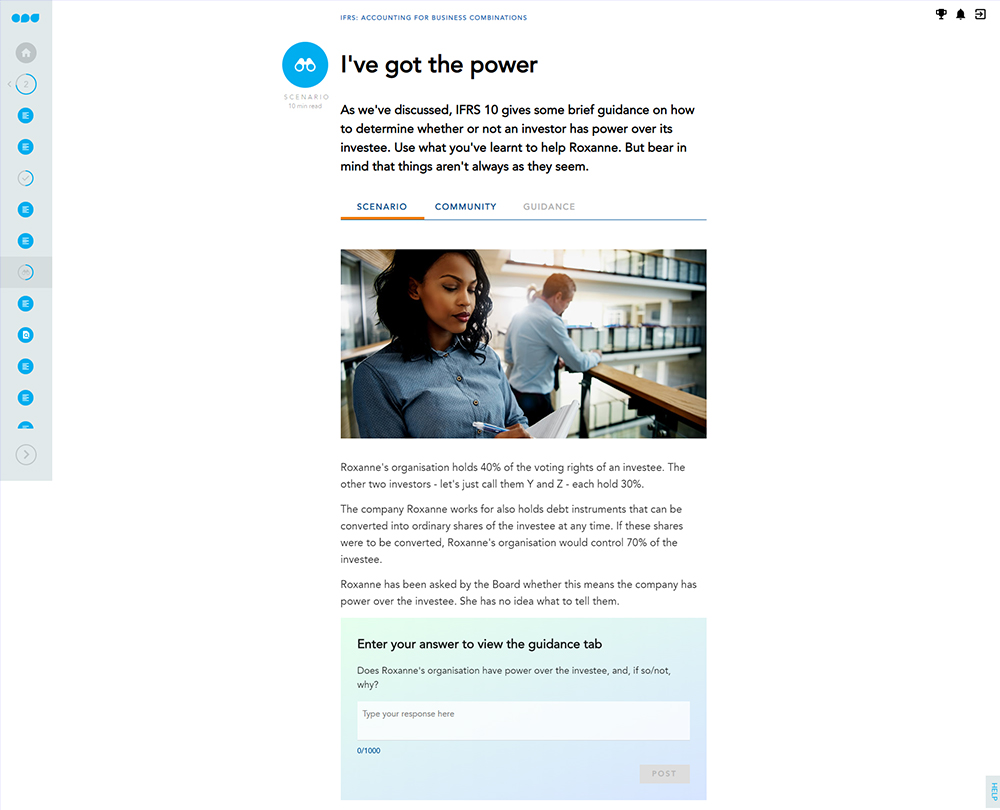SAVE 30% USING CODE ACPD30
This course will enable you to
- Understand the objectives and scope of IFRS 3, 10, 11 and 12 as well as IAS 27 and 28
- Know the basic rules regarding separate and consolidated financial statements
- Understand how a business combination is identified
- Identify how joint control is defined
About the course
A business combination is a momentous moment within your organisation and understanding the accounting and reporting implications is vital. As well as business combinations there are other significant moments, too, for example when one entity unites with another on a short-term or one-off basis in a joint venture; these are all situations in which the impact on the accounting and reporting will be significant and a thorough understanding is important.
Now updated throughout and with additional cases studies and scenarios, this course looks at the various implications of accounting for such issues which are covered by a number of IFRS Standards such as business combinations, separate financial statements and disclosures of interests in other entities.
Look inside
Contents
- Business combinations
- The importance of business combinations
- Objective and scope of IFRS 3
- Identifying business combinations
- The acquisition method
- Identifiable assets, liabilities and non-controlling interests
- Goodwill
- Problems with valuation
- Business combinations with incomplete information
- Subsequent measurement and accounting, and disclosures
- Separate and consolidated financial statements
- Separate or consolidated?
- Objective and scope of IAS 27
- Preparing separate financial statements
- Objective and scope of IFRS 10
- Control, power and returns
- Principal or agent?
- IFRS 10: harder in practice than in theory
- Accounting requirements
- Investment entities
- Standard issues
- Joint arrangements, associates and joint ventures
- Different types of joint arrangement
- Objective and scope of IFRS 11
- Joint control
- Joint operations and joint ventures
- Objective and scope of IAS 28
- Definitions and key terms
- Significant influence
- The equity method
- More on the equity method
- Impairment
- Interests in other entities
- Disclosing interest
- Objective and scope of IFRS 12
- Significant judgements and assumptions
- Interests in subsidiaries
- Joint arrangements and associates
- Unconsolidated structured entities
- Consolidation and equity accounting
How it works
Reviews
| Recommended | ||||
Why not upgrade?Find the best way to complete your CPD | CourseNeed just a few unitshourshours? | Pick n MixAll you need for this year's CPD. | LicenceAll you need for this year and more. | TeamKeep your whole team up to date. |
|---|---|---|---|---|
| Access to this course | ||||
| Total CPD unitshourshours | 4 unitshourshours | 21 units20 hours21 hours | 800+ unitshourshours | 800+ unitshourshours |
| Access period | 120 days | 120 days | 12 months | 12+ months |
| Audit-proof CPD completion certificate | ||||
| Immediate access to our entire CPD catalogue | ||||
| Exclusive news and CPD every week plus monthly webinars, all year round | ||||
| Account manager on hand to support your team’s needs | ||||
| Learn more | Learn more | Learn more | ||
Why not upgrade?
Find the best way to complete your CPD
You might also like
Take a look at some of our bestselling courses
SAVE 30% USING CODE ACPD30

